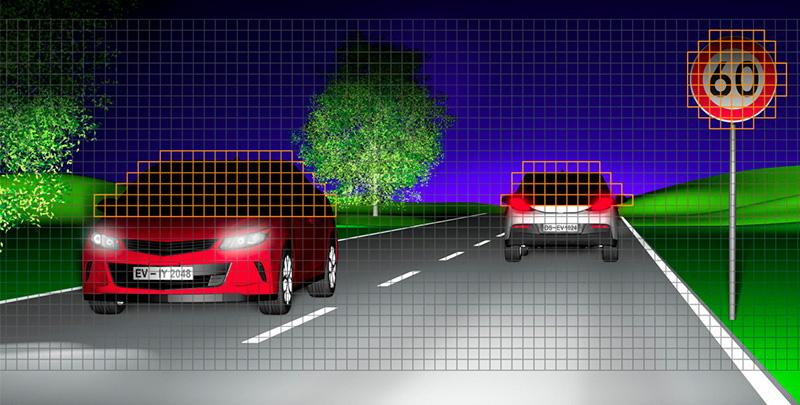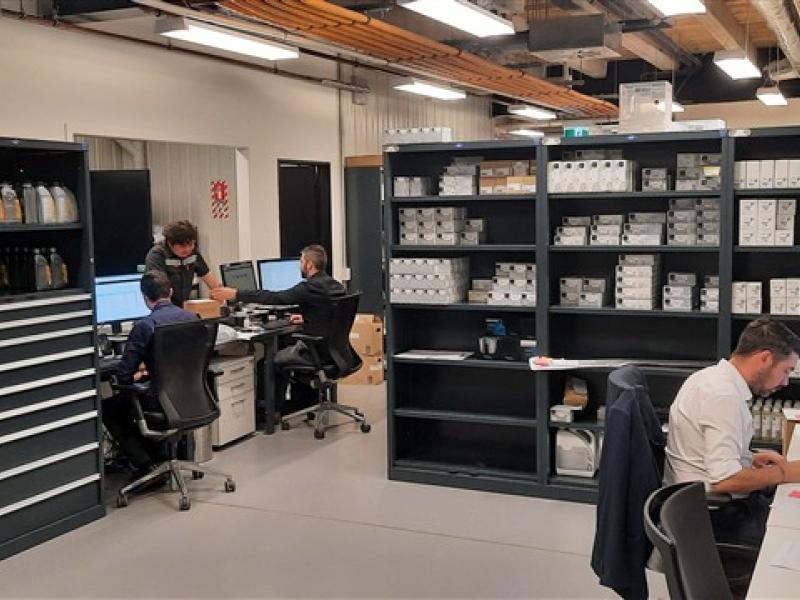Although laser lighting technology, first seen on the superfast racers at the Le Mans 24 Hours, has started to appear on a few top-end luxury and sports cars, it’s interesting to see that carmakers are turning more and more to LED technology to fulfil their car lighting needs, even on their top models, including a “thinking” chip that doesn’t need extra hardware such as cameras to prevent dazzling.
Lasers made automotive news when they were adopted on the BMW i8 electric sports car, then on the Audi R8 LMX supercar, and later on the BMW 7 Series, after extensive testing at Le Mans.
At the time laser light was seen as an absolute innovation in automotive lighting and the next big step forward since the introduction of halogen, xenon, and LED headlight technologies, especially since it allows headlights to be much smaller and more efficient.
Laser diodes are particularly impressive due to their small size: one laser diode brightness is four times that of LEDs, allowing for much smaller headlights – without compromising on light intensity.
The primary benefit for drivers is that these headlights will have extra-long range of up to 600 meters - double the distance of most standard LED headlights.
However, absolute range isn’t the only requirement for headlights. It’s essential that other road users aren’t dazzled by ultra-bright lights, and it is for this reason that Audi has chosen Osram Opto semiconductors in the front lighting of its new flagship.
The innovative feature of the Audi A8’s HD matrix headlights is that for the first time the Oslon Compact PL LEDs are arranged in two lines. As a result, other road users are masked out more precisely by the light beam and are not dazzled.
The Oslon Compact PL has an electrically insulated thermal contact. By using appropriate pcb technologies the thermal connection can be significantly improved, which leads to a higher luminous flux. At the same time, notchless chip technology allows the optical systems to be more efficient. It is being used for the first time in the new Audi A8 as adaptive high beam and low beam.
The Oslon Black Flat S family, which also features notchless chip technology and is also celebrating its premiere, has now been installed in the Audi A8 for the first time in its three-chip version. The individually controllable chips allow for the light beam to be adjusted to the respective situation, e.g. in city traffic or on the highway, increasing visual comfort
However, effective as it may be this is still quite complex, especially in the steps taken to prevent dazzling, so now Osram Opto Semiconductors has revealed a new “thinking” LED chip, the Eviyos prototype, the world’s first hybrid LED which will be developed to be the first market-ready smart controllable high-resolution LED.
As soon as oncoming traffic is detected the appropriate pixels are automatically switched off so drivers of oncoming vehicles are not dazzled.
This differentiates if from existing variable beam headlights, which use a constantly-on metal halide light source and a variable shadow mask to absorb unwanted light.
Camera feedback is used to turn off of dim pixels that would cause light to shine in the eyes of on-coming road users, or reflective road signs that could dazzle the user.
However, in the Osram prototype two technologies are combined in one component: a light emitting chip and individual pixel control electronics. This combination means that the 1,024 pixels of Eviyos plus the driver are all accommodated in a footprint of approx. 4mm x 4mm.
“The hybrid LED is another example of our products making a major contribution to improving the quality of life in many different areas. With Eviyos we are helping to make the roads safer and improve comfort and convenience for drivers. We are proud that we can present the first prototype so soon after completing the research project. We are now another stage further toward series production”, said Thomas Christl, marketing manager at Osram Opto Semiconductors.
Eviyos is not only compact and powerful but also energy-efficient thanks to the precise control and dimmability of the individual pixels. The only pixels that are ever on are the ones that are actually needed at the time.
At its planned launch at the start of 2020 Eviyos will form a separate product family offering a wide range of possible applications. Smart headlights are just one of the potential areas in which intelligent selective pixel control can be applied.






